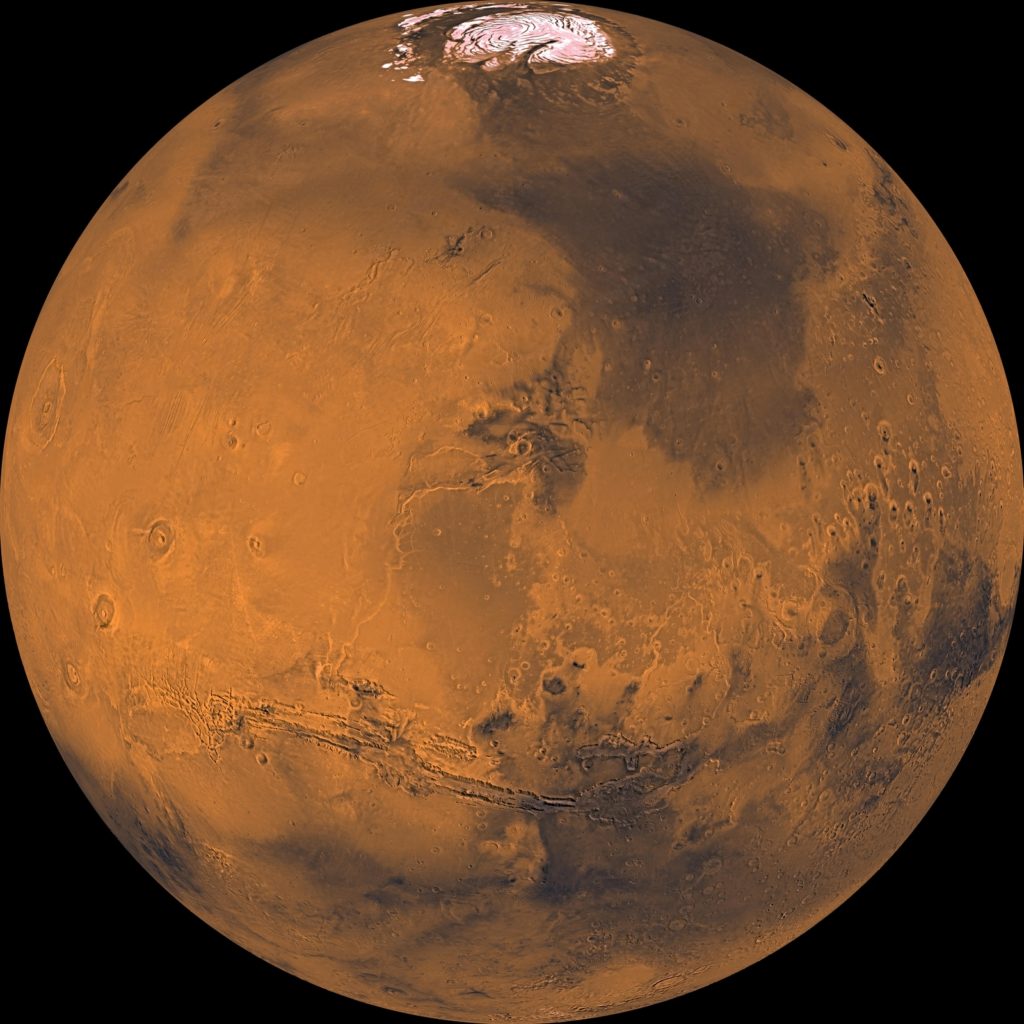
(Looking for last month’s ‘Night Sky’? Find it at this link…)
As 2022 comes to an end, Jupiter and Saturn linger in the western sky after sunset, both still big enough for fruitful telescopic observation. Mars has grown bright and fat in Taurus on its way to opposition – and a concurrent lunar occultation – on Dec. 7-8. Don’t miss Mars – the next opposition arrives in early 2025. Mercury and Venus make a close but low conjunction in the evening sky later in the month. And the Geminid meteor shower arrives in the early morning at mid-month. Here’s what to see in the night sky in December…
1 December 2022. Look for still-bright Jupiter about 2.5o above the waxing gibbous Moon just past first quarter. The planet dominates the southwestern sky after sunset. Still bright at magnitude -2.6, it spans about 43”, large enough to show well in a telescope.
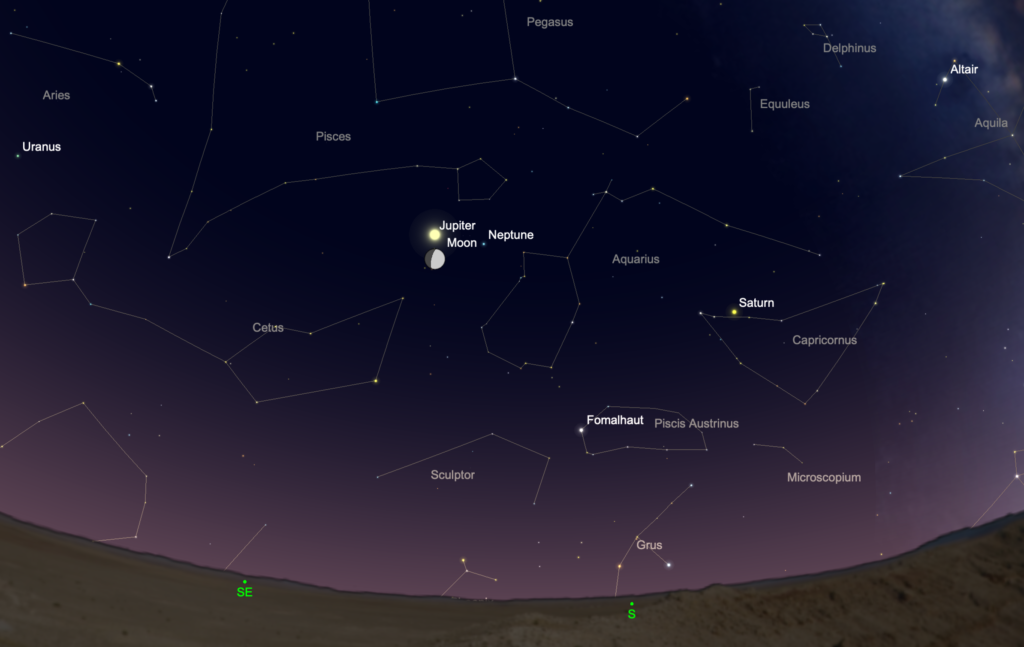
1 Dec. Mars makes its closest approach to Earth, a week in advance of its opposition.
6 Dec. The thickening gibbous Moon lies between the Hyades and Pleiades in Taurus.
7-8 Dec. Mars reaches opposition for the first time in 26 months. The planet shines at magnitude -1.9 in the constellation Taurus and spans about 17.2”. That’s not as large as the past few oppositions, but it’s still impressive. The planet lies along the northern reaches of the ecliptic which favors northern observers who see it high in the sky at culmination, but southern-hemisphere observers see it also. While Mars fades to magnitude -1.2 by month’s end and slowly shrinks, all of December presents the best time (if a chilly one, for northern observers) to observe the planet in the evening hours. Read more about how to observe Mars here.
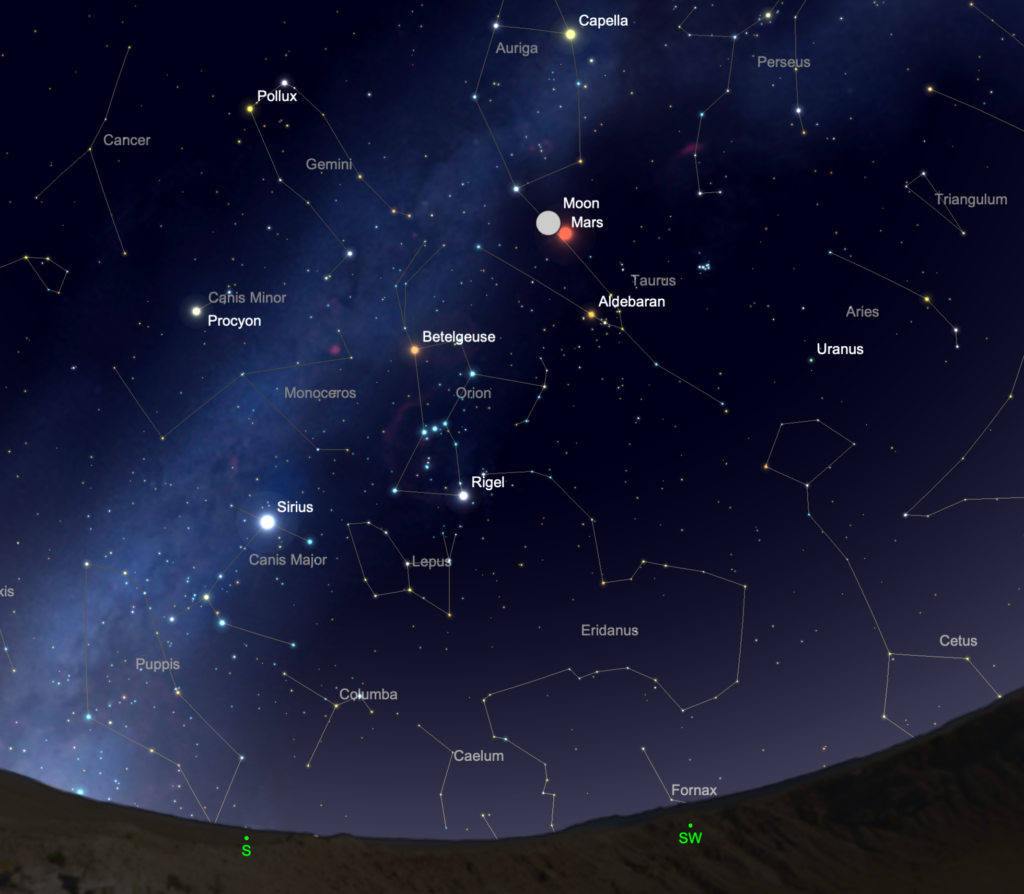
7-8 Dec. As if a Martian opposition isn’t enough, the planet undergoes a spectacular lunar occultation for observers in much of the U.S., all of Canada, and westernmost Europe. Observers elsewhere see the bright planet close to the full Moon in the late hours of Dec. 7 and into the morning of Dec. 8. Learn more about this spectacular occultation in this separate article at Cosmic Pursuits.
8 Dec. Full Moon (Cold Moon), 04:08 UTC
10-11 Dec. Look for a thick gibbous Moon less than 2o from Pollux. It forms a triangle with that star and its ‘twin’, Castor, rising in the east.
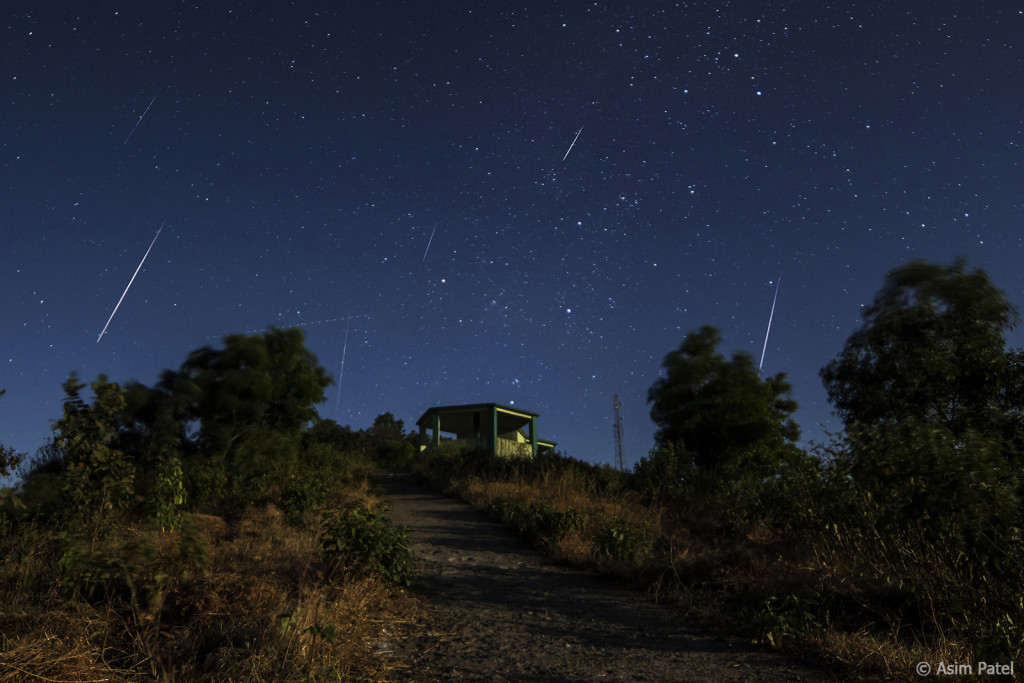
13-14 Dec. The usually reliable Geminid meteor shower peaks in the late hours of December 13 and into the early morning of the 14th. The waning gibbous Moon obscures the faintest meteors this year, but it’s still worth the effort to spot a few Geminids late in the evening and after midnight. Geminids can appear anywhere in the sky and trace their path back to a point near the star Castor in the constellation Gemini. Also, try looking after dark on the 13th for a few brighter Geminids that may enter the atmosphere at a shallow angle and burn slowly across the sky. The meteor shower happens on this date each year as the Earth passes through a stream of debris from the asteroid 3200 Phaethon, an Apollo asteroid discovered in 1983.
16 Dec. Last Quarter Moon, 08:56 UTC
18 Dec. Look for a waning crescent Moon 5o from the bright star Spica in Virgo in the southwestern sky before dawn.
21 Dec. The December solstice arrives at 21:48 UTC. This marks the longest night of the year in the northern hemisphere and the longest day of the year in the southern hemisphere.
21 Dec. Mercury reaches greatest eastern elongation about 20o from the Sun. Tonight it lies in the western sky after sunset about 5o from Venus. The smaller planet shines at a bright magnitude -0.6, but remains embedded in the twilight.
23 Dec. New Moon, 10:17 UTC
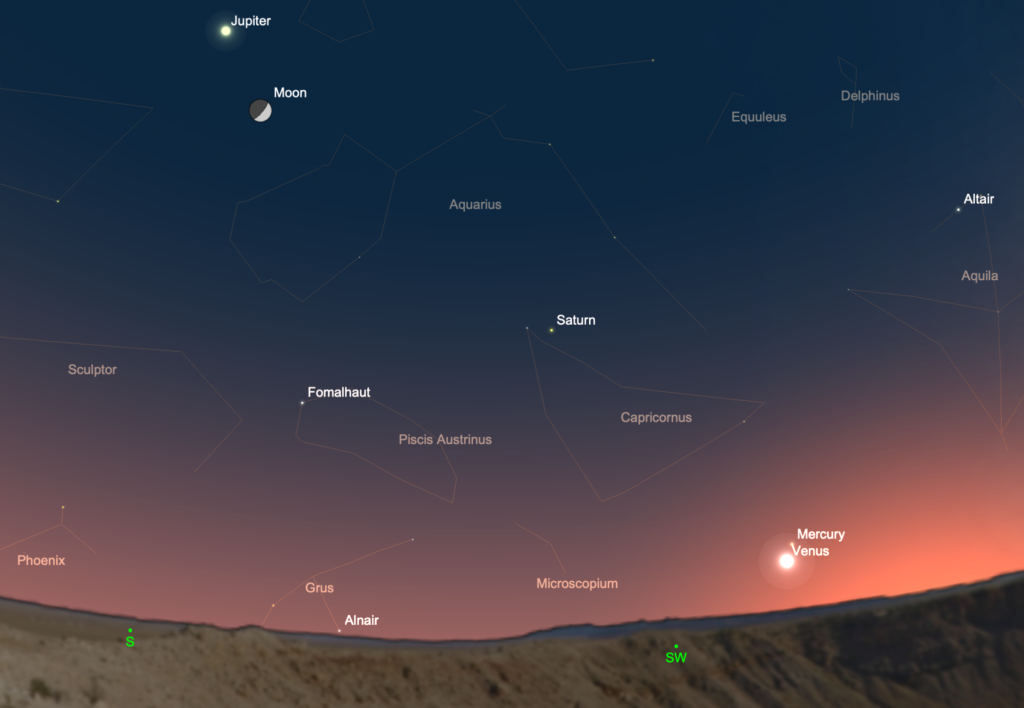
28-29 Dec. Grab a pair of binoculars and head outside just after sunset to see Venus and Mercury just 1.4o apart low over the southwestern horizon. Venus lies below Mercury, and outshines it by four full magnitudes. The evening twilight and low elevation of the pair makes this observation a little tricky – you will need a clear view of the horizon and binoculars (or a wide-field telescope). Saturn, a waxing crescent Moon, and Jupiter lie to the upper left.
30 Dec. First Quarter Moon, 01:21 UTC